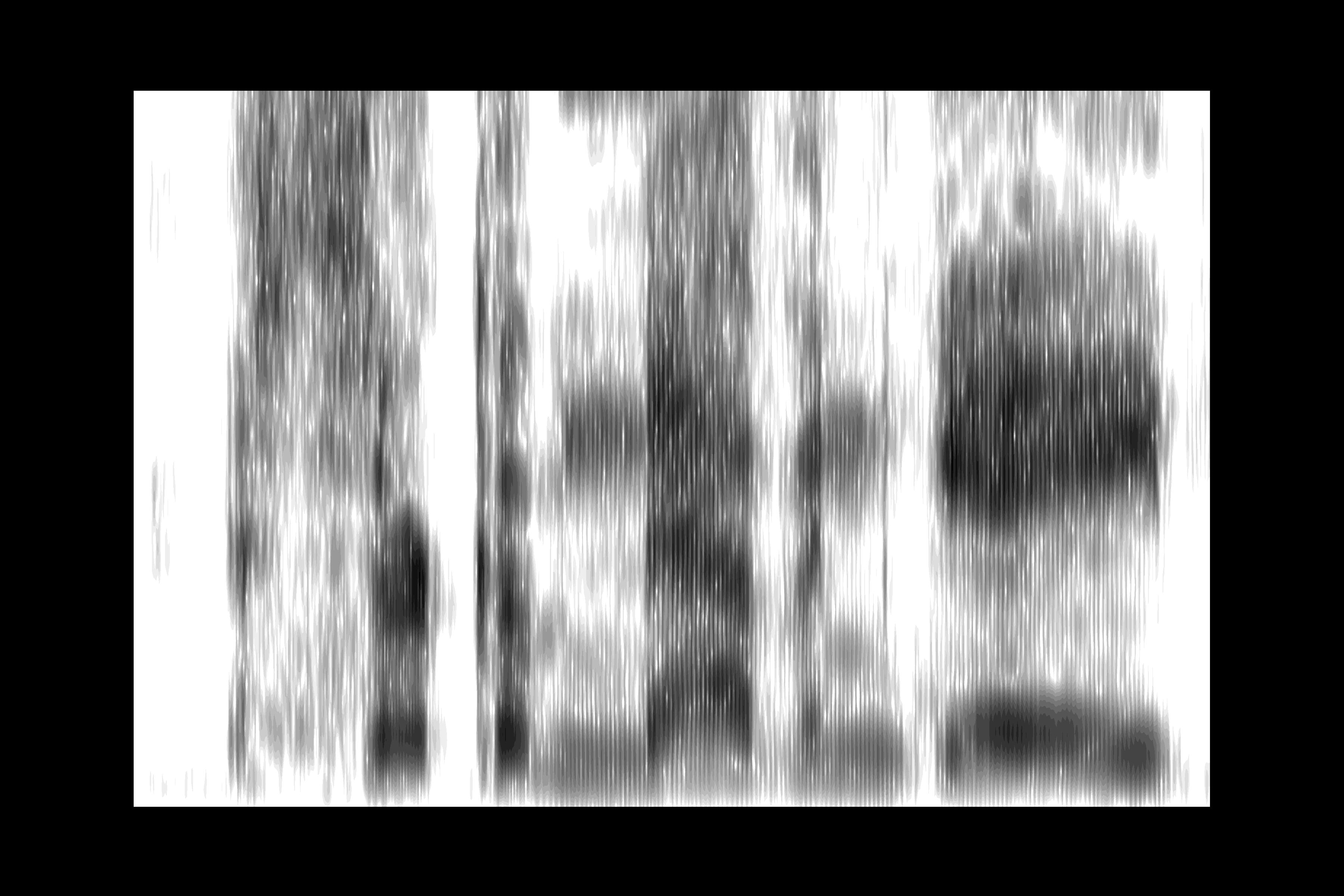While listening to NPR’s Wait, Wait … Don’t Tell Me! a few weeks ago, I heard the coolest speech error: circumnavimgate for circumnavigate.
(In Adam Felber‘s defense, he committed the error during the “Lightning Fill-in-the-Blank” portion of the show; it’s amazing to me that the panelists don’t commit more speech errors than they do during that time. Besides, Adam won the game that particular week, speech error notwithstanding.)
How do I know that it was circumnavimgate, with full copying of the bilabial nasal, and not circumnaviŋgate, with copying of the nasal and the expected place assimilation? Well, my ears deceive me, so I don’t actually know. I’m not particularly good at reading spectrograms, either, so close study of the spectrogram of the clip below has not helped me much.

Anyone want to take a stab at this? I’m curious, but not so curious as to take up any more of my own time …
I was reminded of this speech error a little while ago, when I overheard someone say (what sounded like) confinscate for confiscate. I’m reasonably sure that was an n in that case, but without a recording and spectrogram, I guess we’ll never know.
Eric, can you stretch the horizontal dimension? The sequence that I presume to be the reduced vowel before the intrusive nasal is pretty short, and doesn’t quite show the transitions you’d need to determine labial versus velar closure.
But it looks velar. The wide dark portion in the middle is the [æ], and the adjacent narrow white sequence is then the [v]. The following vowel’s F2 and F3 appear to converge toward the nasal portion, resembling a velar pinch (but the short duration makes it really hard). If the nasal were labial, all the formants would drop from the vowel to the consonant, as they kind of do for the [v].
Let’s see if this works in a comment:
If it does, that should be the same picture but twice as wide.
OK, at the risk of public humiliation, I’ll post the same image with segmentation. (I’m using crude table html code, and holding my fingers crossed that my column borders match the apparent boundaries in the image).
s
ɹ
k
ə m
n
æ
v
ə N
g
e:  
;
t
Looking above the cell containing [əN], see how the second formant rises left-to-right into the third? If the intrusive segment were [m], that F2 would presumably drop. (Unless the nasal formant alters the consonant locus).
A second but less clear diagnostic is to look at the formant structure of the nasal. There’s another [m] in the same word; do they look the same?
Wow, what a mess. Maybe I’ll edit the jpg instead of messing with column widths.
OK, try this:
The formant transitions I was referring to in comment 3 are those above the yellow symbols.
Pingback: david romano . info